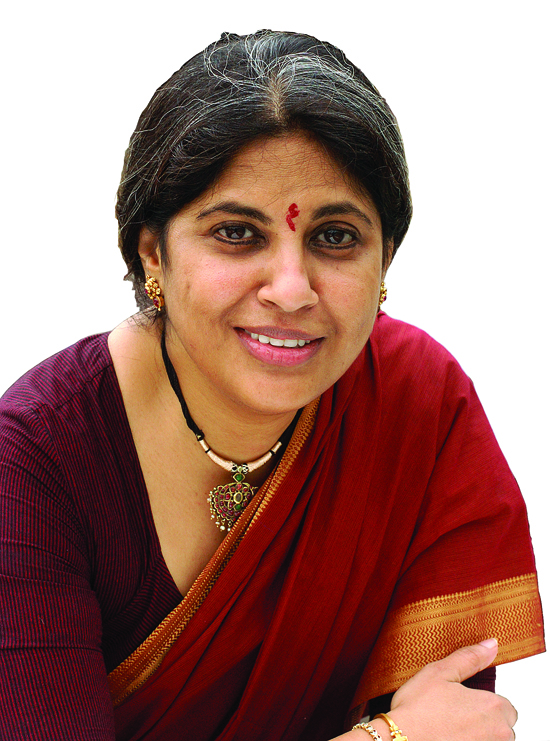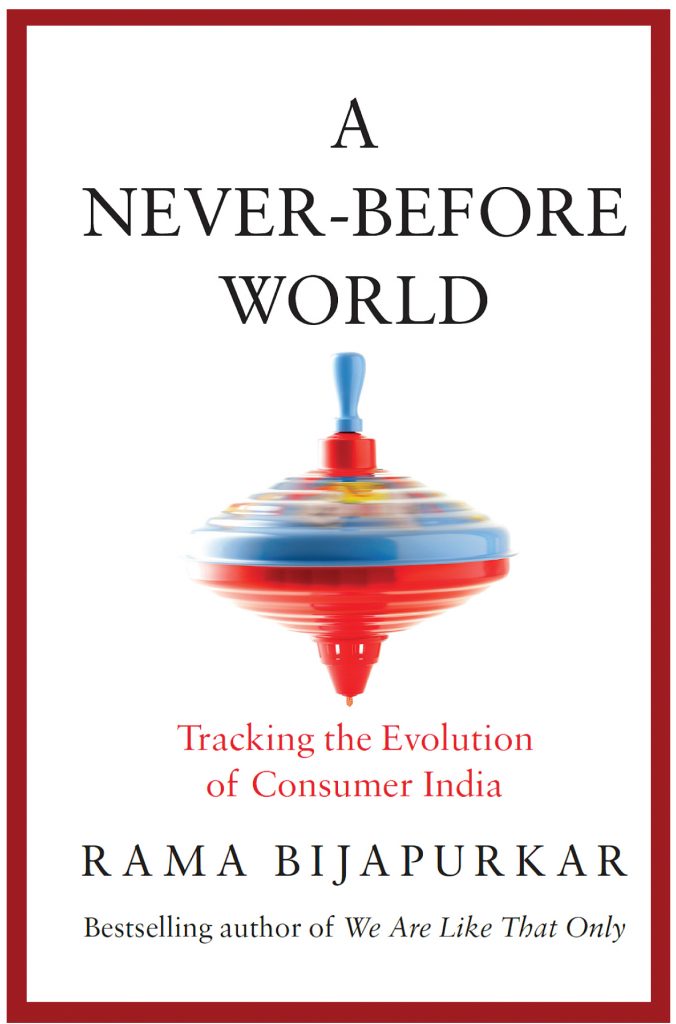
The Indian consumer sector is at a critical juncture with changing consumer preferences but it is also witnessing a slowdown in growth of disposable income. While the Indian consumer sector has slowed down significantly, the new government with a firm people’s mandate of development is expected to revive consumer sentiments. With this as a backdrop to our conversation with Rama Bijapurkar, we discuss her take on the ever evolving Indian consumer sector. Rama Bijapurkar is one of India’s most respected thought leaders on market strategy and India’s Consumer Economy. Rama has an independent consulting practice in the area of business-market strategy, has been an independent director on the boards of several blue chip consumer and financial services companies in India. She is also a regular visiting faculty at the Indian Institute of Management,Ahmedabad, her alma mater She is the author of “We are like that only: Understanding the logic of Consumer India”, globally considered to be the most definitive book on Consumer India, and has just published its sequel “A Never-Before World: Tracking the Evolution of Consumer India”
Here are some excerpts of our conversation.
Parts of it are cyclical. The top 20% of Indian earners (the so called middle class) do have the surplus money, they are not too badly hit on the income side or by inflation, and they will start spending (with an initial spurt caused by fulfilling of the repressed consumption of the past few years – we saw this happened to the auto sector in 2009/10). Since they account for a large chunk of the corporate sector customer base that you are interested in, there will be a definite recovery.
However as I show in my new book, ‘A Never Before World: Tracking the Evolution of Consumer India’, the third trillion dollars of GDP and third decade after liberalisation will be marked by a shrinking of discretionary income-subsidies are going, public goods are scarce and prices are rising (electricity,water, education, fuel / transport etc.) food inflation is supply side driven and income growths will be slower. Therefore structurally, we will see a moderation in consumption growth compared to the second decade; inter category competitive intensity will be intense and a killer fight for the consumer rupee will ensue. Eating out regularly versus a new low cost table for the kid. Pragmatic quality of living improving consumption will win , as consumer aspirations meet a spectacular failure of public goods. (a better quality inverter or effort saving consumer durables or persona; transport as compared to say branded apparel or toiletries that come at a price premium)
Structurally, in the long term, Indian consumption remains one of the biggest games in the world – a billion people, mostly young, tech happy; aspire in a consumption friendly environment, increasing their incomes each year.
Yes there are. Policy determines income generation, income distribution, borrowing-to-buy confidence, growth in prices (or not) of different products and levels of competition (telcos,cable, airlines etc.), investments and savings vs. spending and so on.
Income distribution, the ability to economically serve pan India markets, the nature of competition, the availability of jobs, the psyche of the nation. Basically politics influences policy and society both of which influence consumer markets
Yes they do change. In fact different consumers have different sentiment changes in each scenario because of the fragmented consumer base. But generally speaking, political scenarios are about the strength and character of the government and its ability to drive its agenda. Consumer confidence in a rickety car shop-start-shopping or changing direction frequently or getting lost is bound to be less than when sitting in a car with a good driver, a good destination and a working GPS. And bound to be least in a purposefully driven car headed towards a cliff!
The problem with leveraging is also a supply side one. Most banks do not want to lend tothe bulk of India’s consumer base. . But education loans and health loans and home loans will be the kind of leveraged consumption we will see. If you push leveraged consumption without checking affordability,we will see horrendous NPAs (as we saw in early 2000s). So it helps to not use America as a benchmark and keep leveraged spending caution. The best leverage we would like to see is financial inclusion especially for micro entrepreneurs.
Those which serve the top end of the market will emerge stronger. Durables, Auto, home accessories, premium food, travel etc. Generally speaking though, as I have pointed out in both “We are like that only” and its sequel “A Never-Before World”, since India is made up of several mini Indias, each being affected differently by a different set of forces, a portfolio straddling several mini Indias is the only way to fully derisk the topline of companies and also to fully ride growth.
India is a large economy of a lot of modest income people. The structure of business should be low margins (compared to other parts of the world) and high volumes. Volumes power heady growth. A high margin strategy limits the potential consumer base. Ultimately it is a strategic choice. So if you pitch for higher margins, then you sell at higher prices, and you have a lower potential market, but less pain and less risk. But if you can cater to the long tail of consumption serve a lot of people consuming a little bit each, then it can add up to a lot. Most companies don’t have the capability to do so – unless you are Airtel or Hindustan Unilever or Nokia in its heyday.
I am often at a loss to understand why people expect company strategic responses and choices to be the same – surely it varies by ambition levels, market dominance, shareholder ambitions, strength of balance sheet etc.
Aggregate data in India is always telling a different story than disaggregate data – that’s why it’s so dangerous! The aggregate “all India” figures we see are a combination of growth in different mini Indias. So IT dependant India may be doing well in a so called down cycle or agriculture dependant India may be doing well. Bihar rural may be growing fast while low All India growth numbers are happening. Also, as we discussed earlier, if you are selling a low priced staple portfolio, you may be protected in some cycles, but may not in others; and you may be unable to grow as much as others in an up-cycle. That’s why demand / consumption / company performances look so capricious and confused, but there’s a sound logic explaining it all. In India, God is indeed found in the details at an aggregate level, but at a regional level, it’s a free for all, big and small companies all targeting the same consumer.
For that, you have to buy and read page 153 to 160 of my new book A Never-Before World! Called “The Value spaces of future consumption”,
Broadly,
(i) Pragmatic quality of life improvers of all kinds
(ii) Workmate consumption – things that help you earn more (don’t forget, most of India is self employed)
(iii) Education and health improving / problem solving care (so that you don’t lose the day’s earnings)
(iv) Child centric everything.
(v) Food everything
(vi) Signals of social mobility (different for each group)
Please note that India continues to be the land of large numbers of small suppliers, not listed, serving large numbers of consumers.
The so called unorganized sector plays the low margin-high volume game and most large companies , with vey few exceptions, do nothave the stomach and ability to do so. It’s not that the unorganized sector market has a no-entry sign or a padlock on it. But to gain from it, companies have to find the value adding price-performance point that makes consumers feel that the incremental price is worth the incremental benefit they are getting. That requires innovation and patience to hang in there not expecting instant results. Many company’s / shareholders preference is not for this kind of growth. Also lets appreciate that unorganised sector has improved a lot in recent years. Food for example. Apparel for example. Also a lot of un onorganised sector goods are imported from China at amazing prices and quality that is fairly good.
The rural urban divide has blurred. Increasing distribution coverage will help those who have not fully played the distribution card but not for those who already have. And there are both kinds that exist
My book says clearly that Consumer India is totally underserved. Big domestic companies want to go overseas. MNCs want to flog what they already have. It’s no man’s land – lots of unfulfilled needs. The consumer is ready and waiting, but suppliers lag far behind.

A Never-Before World
Sub title: Tracking the Evolution of Consumer India
Foreword: P Chidambaram
Published Nov 2013
Five years after We Are Like That Only, her seminal and best-selling study on the logic of Consumer India, Rama Bijapurkar takes stock of its evolution in her new book. She starts from the point that emerging markets – the queen of which is India – are a never-before world, and businesses approaching them need to understand the environment in which consumers live, how they think, how heterogeneous they are, and how they are changing. All of these have key implications for correctly evaluating business opportunity and determining market strategy.
India has entered the third decade after liberalization, buffeted by changes on all fronts. Consumption structures and consumer behaviour are changing, and consumer needs and desires are growing faster than incomes. The real war for the consumer rupee begins now – the trick is to understand, without prejudice or preconceived notions, the new world of Consumer India.
Setting consumerism in the context of society and people’s lives, looking not just at how much money people have, what they spend it on and how, but at how businesses can be relevant to consumers’ lives and life aspirations, A Never-Before World explores widely yet sharply everything that businesses need to know and think about to win in the crucial Indian market.
For more on Rama’s articles and books, visit www.bijapurkar.com
Subscribe to enjoy uninterrupted access